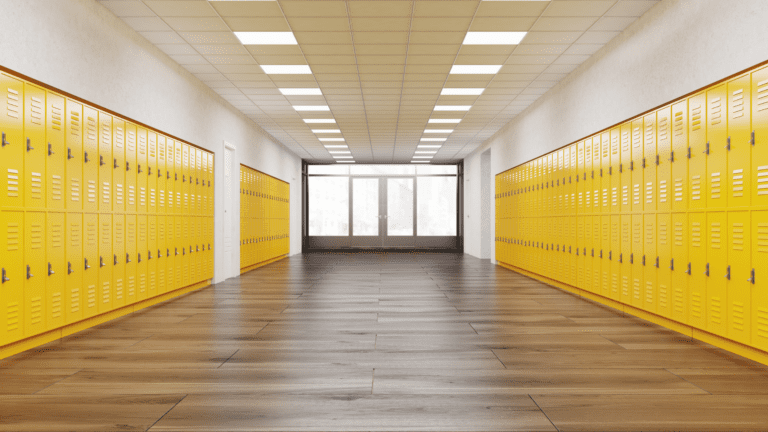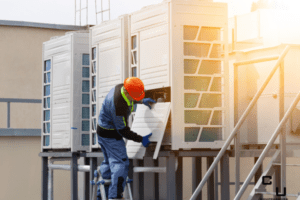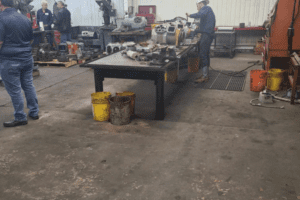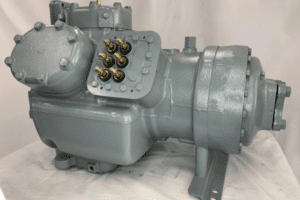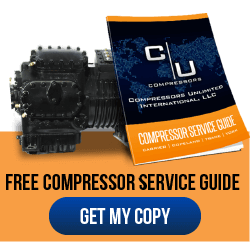Ventilation is a crucial health and safety consideration for schools.
It’s even more critical in southern and southwestern states. From May, when most pupils finish for the year, to August, when they usually come back, stifling temperatures of 90 degrees or more are common.
On top of that, millions of students do at least some summer school every year. An increasing number of districts nationwide are exploring year-round school, so building occupancy during those months will soar.
A crowded, confined space combined with extreme outdoor temperatures is a recipe for trouble.
Parents, Teachers, and Students Alike Look to Schools to Update Ventilation for 2021
For much of the public, 2020 was a crash course in indoor ventilation and how important it is.
No doubt, ventilation slows the spread of childhood ailments through the student population. The more efficient a ventilation system, the more likely it is one or two children could come to school not realizing they’re ill and still avoid infecting their classmates.
Of course, there are limits to how much leeway even the best HVAC system gives.
The best infection prevention measures include administrative action, such as an excused absence policy that encourages children not to come to class sick. But, although you can’t control it all, there are sound reasons to invest in superior ventilation for your learning community.
The following red flags suggest ventilation should be a top priority.
Older School Buildings Are at a Disadvantage When it Comes to Ventilation
If your buildings are 30 years old or more, watch out.
It can be difficult to get strong HVAC performance in aged school buildings because they have narrower ducts than would be installed today. As a result, your cooling and heating systems need to work harder, adding more mechanical wear and tear to the system as a whole.
Research shows indoor air can be more polluted than outdoor air, potentially leading to respiratory complaints.
Buildings may also have unaddressed issues with the exterior envelope and other leak points. Cracked or warped windows lead to energy leakage so your structure is hotter in the summer and colder in the winter. Insulation is another powerful update that often gets left out of maintenance budgets.
Pay particular attention to cleaning or replacing air filters in your HVAC if your structures are older.
If Your Campus Uses Portable Classrooms, Evaluate Each One to Ensure Proper Airflow
School portables have become permanent instruction environments in many districts. Since these are distinct, free-standing buildings, each creates its own temperature zone. Portables are often equipped with window-mounted air conditioning units which, due to poor installation practices, let air leak around the frame.
As a classroom in miniature, each portable needs its own full inspection to gauge ventilation quality.
That means cleaning out the filters and performing maintenance on wall-mounted units, fans, and any other equipment that helps air circulate in the space. It also extends to checking for warped doors, cracked windows, and damage to walls that can precipitate leaks. The portable’s roof and underside must also be examined.
A 2004 study into portable classrooms performed by the California Air Resources Board determined ventilation problems were one of several health and safety issues endemic to portables, failing to provide adequate fresh air for 40% of hours when pupils were present. High carbon dioxide levels can impair student performance.
With that in mind, portables should be singled out for special attention.
A New Compressor Brings Superior Ventilation for Aging, Budget-Conscious Schools
More than one school out there would benefit from a complete tear-down and rebuild of the HVAC system.
When that’s not an option, a new commercial compressor is the next best thing.
Better ventilation is one of the most valuable ways to offset the effects of crowded classrooms. If your school’s enrollment has climbed 10% or more over the life of your current compressor units, it’s time to take a look at their output and make plans to upgrade.
The compressor unit is the heart of your ventilation setup, compressing refrigerant gas to make it available to other elements of the system. The average compressor has a lifespan of 7-10 years, but performance tends to drop off around year seven. Maintenance can extend useful life, but not indefinitely.
A new compressor improves efficiency across the entire HVAC and delivers greater comfort within the temperature zone it serves. With a remanufactured commercial compressor, you can get a unit comparable to an all-new model at a discount of 20%, 30%, or more.
That helps you modernize your campus even if your buildings are older and present challenges.
Schools face many challenges for 2021 and beyond, but air quality doesn’t have to be one of them. With help from a trusted compressor remanufacturing team, you can fit the equipment you need into the district budget.

